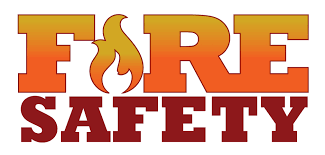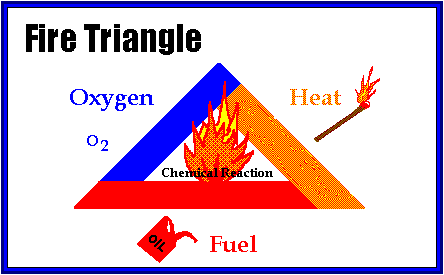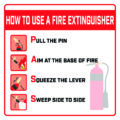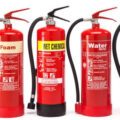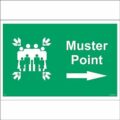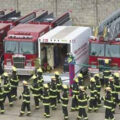What does Fire Safety mean?
Fire safety refers to planning and infrastructure design aimed at reducing the risk of fire or impeding the spread of a fire when one does break out.Fire safety encompasses the use of fire-resistant building materials, preventative actions, safe work practices, fire safety training, flame-resistant protective clothing, and more. It is of the utmost importance to be aware of conditions that may cause a fire emergency and thereby endanger the safety of occupants in the workplace. The major causes of fire in the workplace include overloaded electrical outlets and extension cords, misuse of space heaters, mishandling of flammables, improper storage of combustibles, and improper disposal of smoking materials on campus grounds. Implementing fire prevention measures is the key in an attempt to insure one’s personal safety and the safety of others.
The most important thing to remember is that fire occurs when three things come together at the same time: fuel, oxygen, and an ignition source. The primary method to prevent fires is to keep these elements apart as much as possible.
Fire Triangle
Oxygen, heat, and fuel are frequently referred to as the “fire triangle.” Add in the fourth element, the chemical reaction, and you actually have a fire “tetrahedron.” The important thing to remember is: take any of these four things away, and you will not have a fire or the fire will be extinguished.
Prevention Measures You Can Take
Emergency planning: You need to be prepared for an emergency, such as a fire. An emergency plan should clearly explain what to do in the event of an emergency. It should also describe responsibilities of key employees and what they need to do.You should create a written evacuation procedure. This procedure should explain what needs to happen in the event of a fire alarm being raised. For example, the location of fire alarm call points, extinguishers, exits and details of nominated persons along with their areas of responsibility.
It’s very important that you train your employees. Ensure that they are familiar with the emergency plan. You should then test the arrangements in the plan regularly. You should also carry out a fire drill at least twice a year. The drill will help to ensure that the plan works, and that people can follow it. You should correct any problems found during the drill.
Fire alarms and detectors: You need to provide a method for detecting a fire quickly and raising the alarm. The warning system, when it has been set off from any point, should be clearly heard throughout the premises. It should provide enough warning for people to evacuate the building safely.Additionally you should provide clear instructions or notices showing people how to operate the warning system, and how to respond to it. It’s important all fire safety measures are maintained and regularly tested. You should test your fire alarms weekly.
Escape routes: All escape routes must be easily identifiable, with instructions about the means of escape displayed. You also need to provide instructions and training for your employees on how to escape in the event of an emergency. You need to ensure that there are enough exits through the building, and that they are in the right places. This will allow you to guarantee that, in the event of a fire anywhere in the building, there is at least one free route available.
The type and size of exits will depend on the number of people likely to use them in the event of an evacuation. Escape routes must be adequately illuminated and free of any obstacles. You should do daily checks to ensure this.
Escape Plan Basics
- Include two ways out of every room in all escape plans
- Designate a location to meet outside the building
- Verify that smoke alarms are installed to provide early detection and warning so you’ll have enough time to execute your escape plan
- Make sure doors located in your path of travel can be opened from the inside under all lighting conditions
- Verify that doors located in your path of travel Do not require a key to open from the inside
- Take note of whether any disabled or elderly residents will require evacuation assistance
- Conduct a roll call to verify everyone has escaped the building
- Remain outside until notified by the fire department that it is safe to re-enter the building
- Practice, practice, practice your plan!
If your secondary escape route is a window…
- Make sure the window can be opened from the inside
- Assure the window is large enough for you to pass through the opening
- Verify the windowsill is low enough to allow you to crawl through the opening
- Make sure any security bars can be opened from the inside without the use of a key, and that you can open them under all lighting conditions
- Determine how you will escape if the window is above the first floor: will you purchase a rope ladder or other emergency escape device, or will you wait for the fire department to arrive and evacuate you?
- Make sure sloping terrain, the location of the window, or other factors will not prevent the window from being used as a secondary escape route
Evacuation of disabled people: You need to make arrangements to ensure the safe evacuation of everybody in your premises. Your fire risk assessment should identify groups of people at risk, taking particular care of vulnerable groups or individuals. For example children, the elderly and people with disabilities.
To help identify their needs you should create personal emergency evacuation plans (PEEP) when required. The PEEPs should be tailored to the individual and should give clear explanations of the evacuation procedure. For premises where it is not known who could visit, such as hotels, standard PEEPs can be created. These are procedures to assist people with disabilities. Employees should be trained on how to put PEEPs into practice in the event of an emergency.
Deciding On Fire Fighting
When deciding ways of fighting fires you need to decide on the type of fire extinguisher and where they should be located. This will guarantee that they are suitable for the type of fire that could occur, and of sufficient capacity for the fire risks at the premises. They should be located at obvious places, and you should highlight their location. Fire extinguishers should be close to fire hazards, and you need to make sure that people can access them without being exposed to any risk.
People that are likely to use fire extinguishers should receive training on how to use them. You need to ensure that fire extinguishers are serviced annually. Make certain that a copy of emergency procedures are posted in a conspicuous location in each work area.
- Have an understanding and knowledge of the contents of the Unit Emergency Response Procedure
- Regularly observe emergency evacuation routes, fire extinguishers and emergency and exit lights. Immediately report any missing equipment or any other problems discovered.
- Regularly observe corridors and stairwells, and keep them clear of obstructions.
- Regularly observe all exits to keep them clear of obstructions AT ALL TIMES.
- Report any tampering with the fire alarm, smoke detection and suppression systems to EH&S.
- Regularly observe fire doors to make certain they are closed at all times; report inoperable doors
- Forbid the use of candles or any other open-flame devices for any purpose in university buildings.
- Respect the “No Smoking” policy in all facilities.
- Enforce all safety regulations.
SEE: Occupational health and safety


